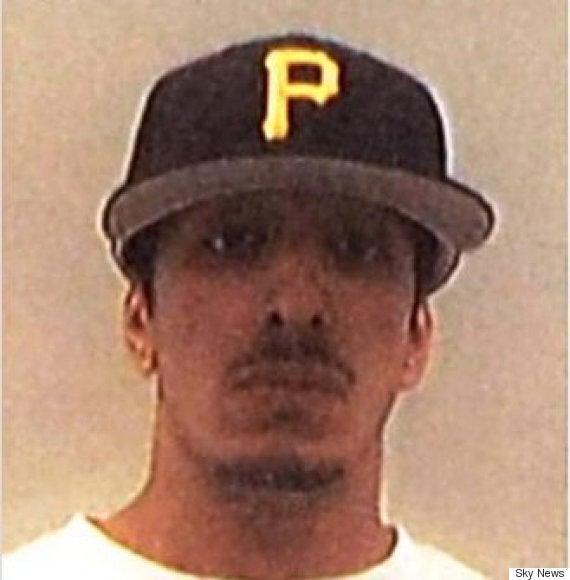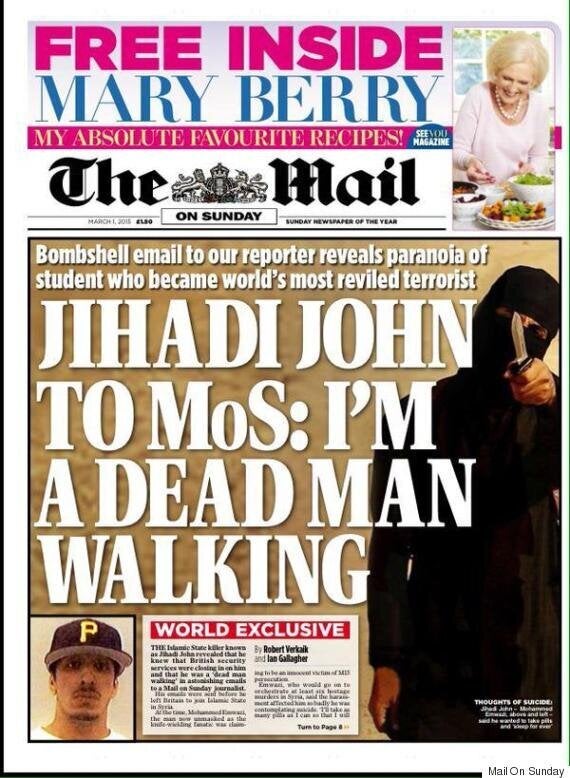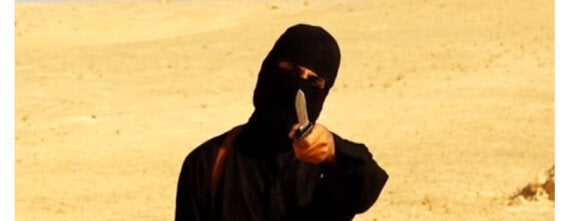The man identified as the Islamic State (IS) murderer "Jihadi John" emailed a journalist before he fled to begin his reign of terror, it has been revealed.
Mohammed Emwazi feared he was a "dead man walking" after run-ins with security services before fleeing to Syria, the email exchanges reveal.
Emwazi, a computer programming graduate, said he considered suicide after coming face to face with what he suspected to be a British spook as he attempted to sell a laptop computer in 2010.
In an email exchange with the Mail on Sunday (MoS) at the time, Emwazi described how he became suspicious of the mystery buyer after they met.

Mohammed Emwazi, pictured before he joined IS
It was also claimed Emwazi was part of a cell orchestrated by Osama Bin Laden to wreak terror on the streets of London, including having a role in the failed July 21 bomb attacks in 2005, three weeks after the 7/7 bombings which killed 52 people and injured more than 700.
Emwazi told the MoS's then-security editor Robert Verkaik he felt harassed by security services, in a series of emails, three years before he left to join IS, also known as ISIS or ISIL, saying: "Sometimes I feel like a dead man walking, not fearing they (MI5) may kill me.
"Rather, fearing that one day, I'll take as many pills as I can so that I will sleep for ever! I just want to get away from these people!"

The Mail On Sunday's front page, revealing the emails
It comes as British security services face pressure over accusations of failing to keep track of potential terror suspects and forcing desperate British Muslims into the clutches of Islamic extremist groups.
Home Secretary Theresa May rallied to the defence of the UK's security and intelligence services, calling them "true heroes", following claims on Thursday by campaign group Cage that MI5 drove Emwazi to extremism.
The University of Westminster has also hit back at claims it is a fertile breeding ground for Islamic fundamentalism as arguments rage about who is to blame over Jihadi John.
Kuwait-born Londoner Emwazi had been pinpointed as a potential terrorist by the British authorities but was nonetheless able to travel to Syria in 2013 and join a group responsible for the murder of several Western hostages.
Responding to claims from a fellow former student that the university allowed extremism, a spokesman for the institution said: "We condemn the promotion of radicalisation, terrorism and violence or threats against any member of our community.
"We have strict policies to promote tolerance among our 20,000 student community, who come to study from over 150 nations."
SEE ALSO:
There was also a renewed suggestion - from a former independent reviewer of government anti-terror laws - that Emwazi might have been prevented from joining up with IS had restrictions on suspects not been relaxed.
"Had control orders been in place, in my view there is a realistic prospect that Mohammed Emwazi, and at least two of his associates, would have been the subject of control orders with a compulsory relocation," Lord Carlile told Sky News.
"If that had been the case, he would not have done what he's done in recent times," the Liberal Democrat peer added.
A power to force suspects to move to another part of the country - dropped when control orders were axed in favour of Terrorism Prevention and Investigation Measures (Tpims) - has now been restored.
The former head of MI6 also hit back at claims that the security services played a role in Emwazi's radicalisation.

Jihadi John as he appeared in an IS propaganda video
But Sir John Sawers, head of MI6 from 2009 to 2014, said arguments that harassment drove Emwazi to join IS were "very specious".
Jihadi John rose to notoriety after he first appeared in a video posted online last August, in which he appeared to kill American journalist James Foley.
Dressed in black with a balaclava covering all but his eyes and the ridge of his nose, and a holster under his left arm, he reappeared in videos of the beheadings of US journalist Steven Sotloff, British aid workers David Haines and Alan Henning, and American aid worker Peter Kassig.
Last month, the militant appeared in a video with Japanese hostages Haruna Yukawa and Kenji Goto, shortly before they were killed.
Reports tonight suggested Emwazi was part of a terror cell dubbed The London Boys, which included three members - closely linked to Emwazi - who allegedly trained at an Al Qaeda camp.
Details of his involvement in the cell were reportedly disclosed during a court hearing in 2011 - two years before Emwazi fled for Syria after complaining to Cage of harassment from the secret services.
Cage director Asim Qureshi was condemned after holding a press conference on Thursday in which he recalled previous meetings with Emwazi and described the man - who reports said would go on to become one of the world's most wanted terrorists - as "a beautiful young man", who was "kind and gentle".